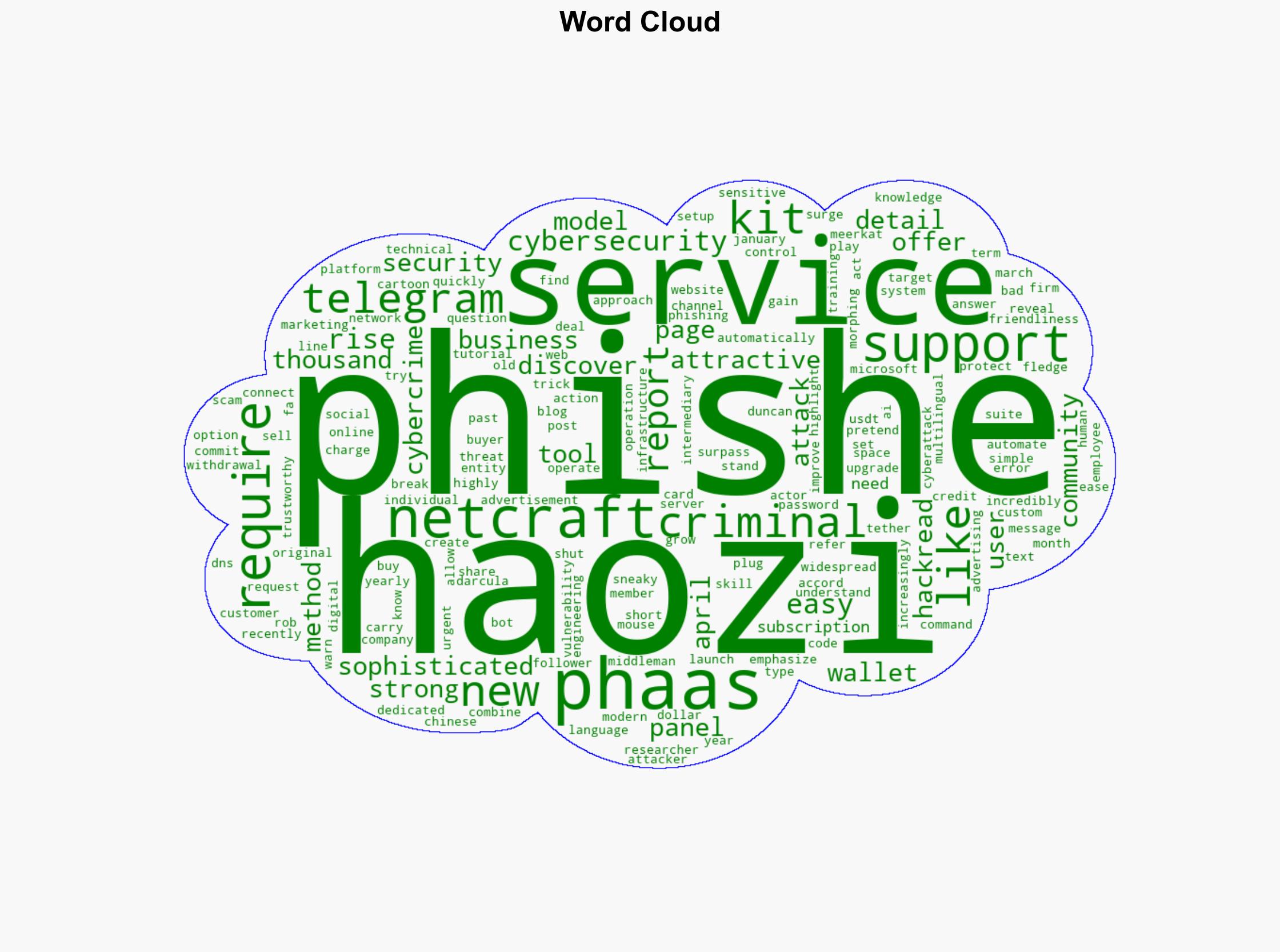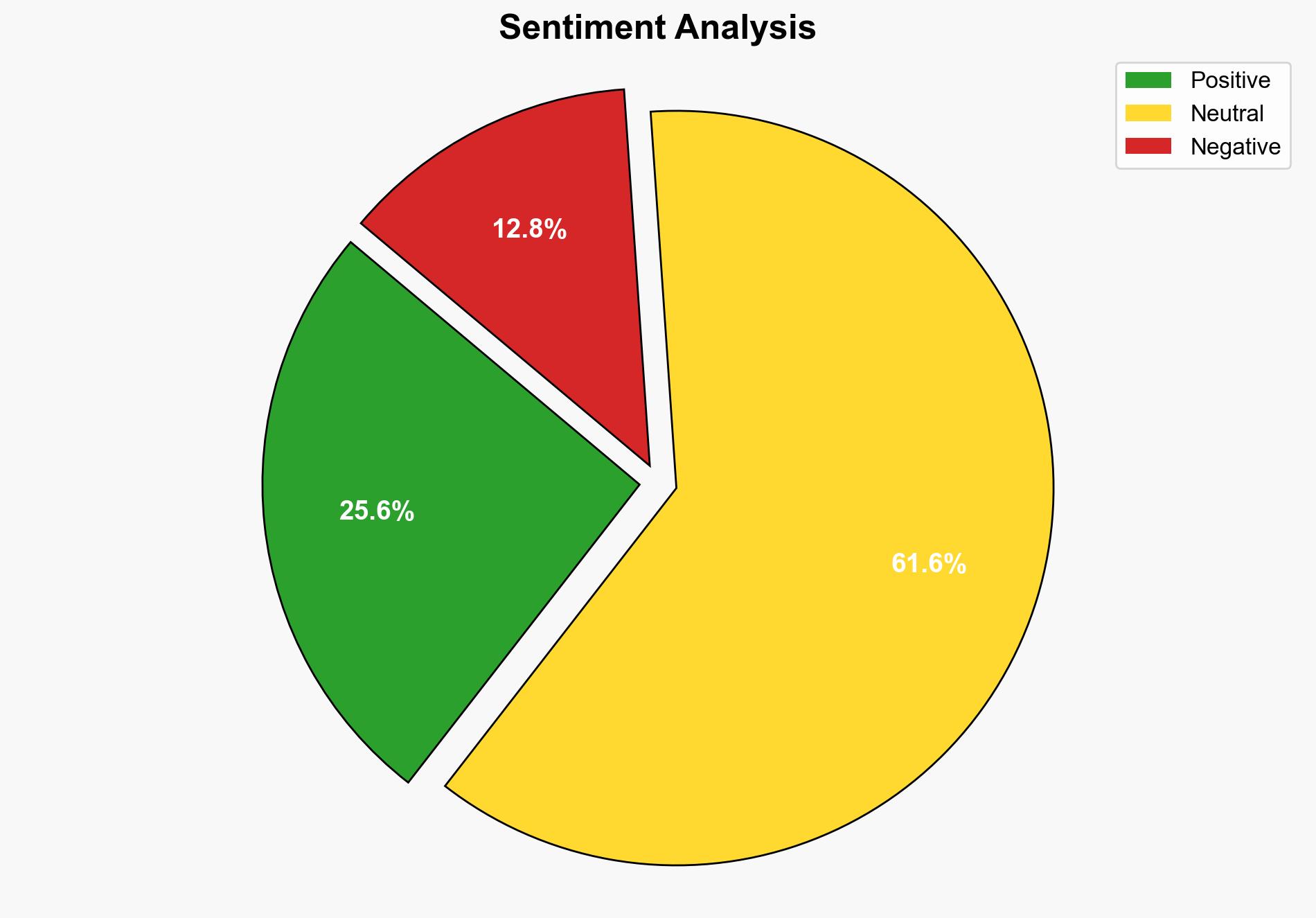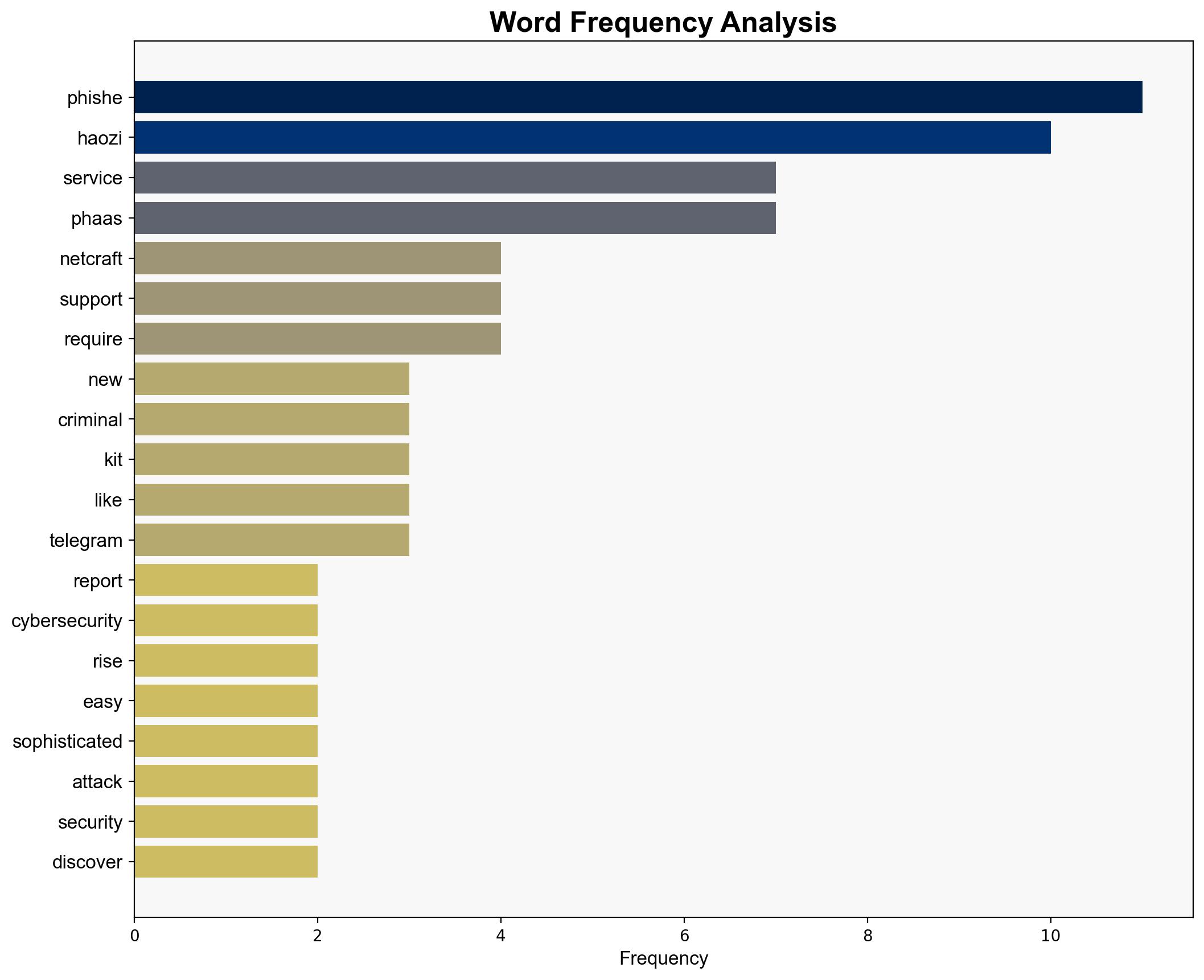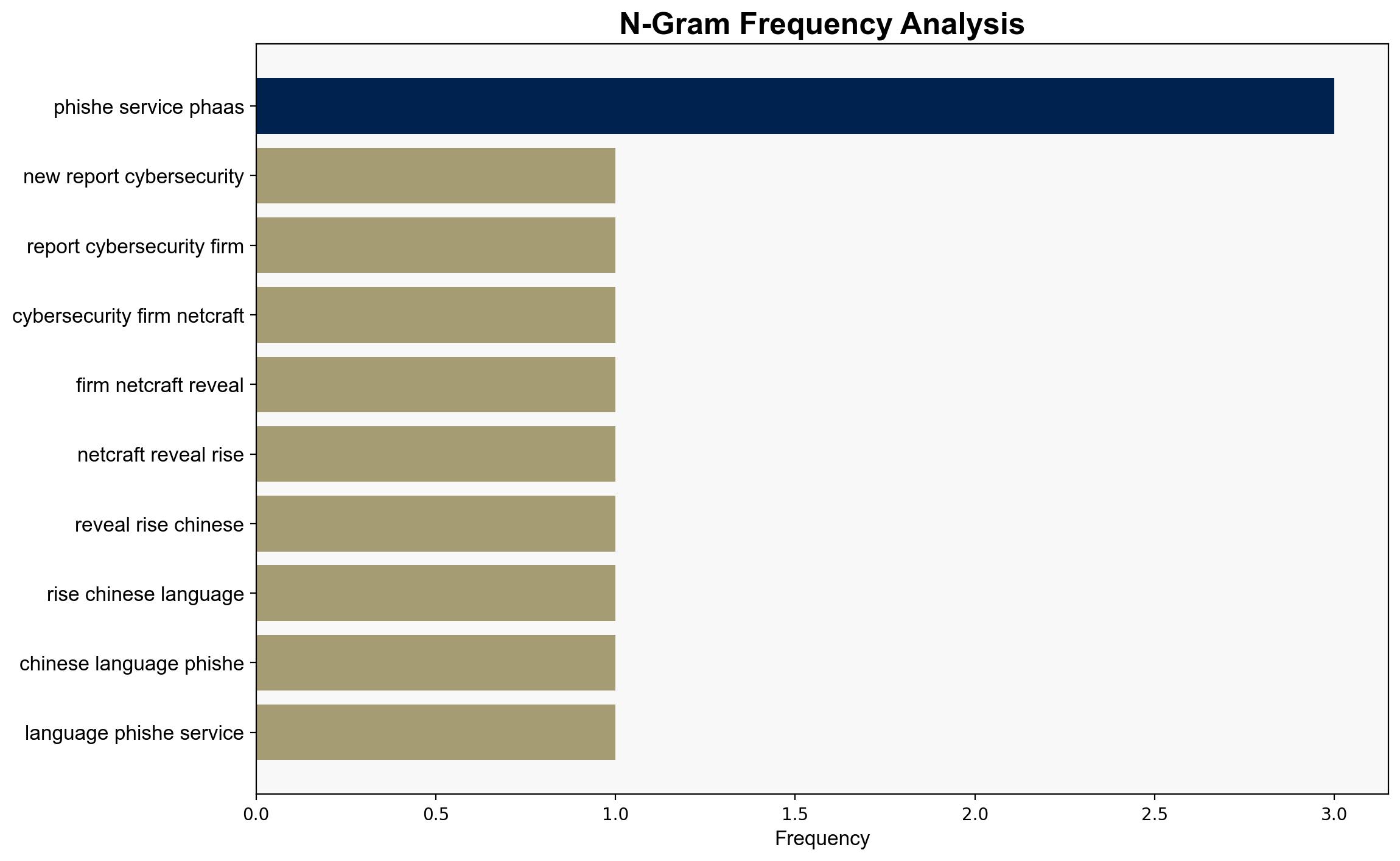Chinese Phishing Service Haozi Resurfaces Fueling Criminal Profits – HackRead
Published on: 2025-05-30
Intelligence Report: Chinese Phishing Service Haozi Resurfaces Fueling Criminal Profits – HackRead
1. BLUF (Bottom Line Up Front)
The resurgence of the Chinese Phishing-as-a-Service (PhaaS) platform, Haozi, presents a significant threat to cybersecurity. The service’s user-friendly interface and automated setup make it accessible to individuals with minimal technical skills, thereby broadening the pool of potential cybercriminals. Immediate action is recommended to enhance cybersecurity measures and employee training to mitigate the risks posed by such platforms.
2. Detailed Analysis
The following structured analytic techniques have been applied to ensure methodological consistency:
Adversarial Threat Simulation
Haozi’s model simulates potential actions of cyber adversaries, highlighting vulnerabilities in current cybersecurity frameworks and the need for improved resilience strategies.
Indicators Development
Monitoring for behavioral and technical anomalies is crucial for early detection of phishing activities facilitated by Haozi.
Bayesian Scenario Modeling
Probabilistic inference suggests an increased likelihood of cyberattacks originating from users of Haozi, necessitating predictive defenses.
Network Influence Mapping
Mapping Haozi’s influence reveals its extensive reach and potential impact on global cybercrime activities.
3. Implications and Strategic Risks
The rise of Haozi underscores the growing sophistication and accessibility of cybercrime tools, posing systemic risks to both public and private sectors. The platform’s ease of use and robust support system may lead to an increase in phishing attacks, exploiting human error rather than technical vulnerabilities. This trend necessitates a reevaluation of current cybersecurity strategies and an emphasis on comprehensive employee training programs.
4. Recommendations and Outlook
- Enhance cybersecurity infrastructure to detect and respond to phishing threats more effectively.
- Implement regular employee training programs focused on recognizing and avoiding phishing attempts.
- Develop scenario-based projections to prepare for potential increases in phishing attacks, considering best case, worst case, and most likely scenarios.
5. Key Individuals and Entities
Rob Duncan, a security researcher at Netcraft, has been instrumental in identifying the resurgence of Haozi.
6. Thematic Tags
national security threats, cybersecurity, phishing, cybercrime, PhaaS, Haozi, employee training





